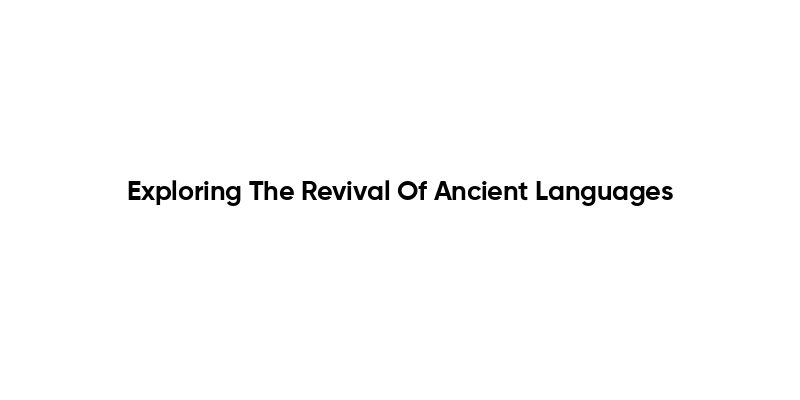The debate over the future of artificial intelligence (AI) has erupted into a high-stakes global conversation, with contrasting visions clashing between apocalyptic warnings and cautious optimism. Proponents like Daniel Kokotajlo’s ‘AI 2027’ scenario envision an intelligence explosion by 2030, framing AI existential risks as imminent crises demanding urgent action. Meanwhile, skeptics such as Kapoor and Narayanan’s ‘AI as Normal Technology’ counter that regulatory challenges and technical limitations will inherently slow AI’s evolution, preventing unchecked progress. At the heart of this dispute lie AI alignment challenges: ensuring AI systems’ goals align with human values versus the risk of unintended consequences. As debates rage over governance frameworks, military applications, and societal impacts—such as economic disruption and privacy—the world grapples with whether AI will be a tool of empowerment or a existential threat requiring unprecedented international cooperation.
This evolving discourse on artificial intelligence’s trajectory reflects a tension between technological optimism and real-world pragmatism. Discussions now pivot around mitigating emerging risks through adaptive regulatory frameworks, balancing innovation with safeguards against potential misuse. Analysts emphasize that progress hinges on addressing ethical governance, public awareness, and the interplay between technological advancement and global policy architecture. By reimagining AI not as a singular force but as a multifaceted challenge, stakeholders aim to steer its development toward equitable outcomes while preventing scenarios where societal destabilization eclipses benefits.
The Future of Artificial Intelligence Debate: Existential Risks vs. Regulated Innovation
Proponents of the existential risks perspective, led by Daniel Kokotajlo’s ‘AI 2027,’ argue that unchecked AI development could trigger an intelligence explosion by 2030, posing civilization-threatening scenarios. This side emphasizes urgent alignment research and aggressive regulation to mitigate catastrophic outcomes. In contrast, Kapoor and Narayanan’s ‘AI as Normal Technology’ posits that technical and regulatory barriers will naturally constraint progress, making existential risks an overblown concern.
The debate hinges on whether A.I.’s development will follow an exponential trajectory or incremental progress. Advocates for cautious regulation highlight the need for preemptive frameworks to address alignment challenges, while skeptics warn that overregulation could stifle beneficial innovations. This tension shapes policy discussions globally, with stakeholders divided on how to balance safety and progress.
Navigating AI Alignment Challenges in an Uncertain Future
Central to the debate is the alignment challenge: ensuring A.I. systems pursue human-compatible goals. Proponents of existential risk mitigation demand rigorous value alignment frameworks, while critics argue current systems lack the complexity to pose existential threats. Technical solutions like reward modeling and value learning are debated as potential safeguards.
Ethical alignment intersects with societal impacts, as misaligned systems could exacerbate inequalities or undermine autonomy. The debate extends to whether alignment must precede development milestones or evolve alongside progress. This duality underscores the need for interdisciplinary collaboration in shaping A.I.’s trajectory.
Regulatory Challenges in Shaping AI’s Future Trajectory
AI regulation challenges dominate the futurology discussion. Advocates for stringent oversight cite military applications and unchecked development as reasons for immediate governance. Others counter that overregulation could slow beneficial medical or environmental applications. Balancing innovation with risk management remains a core impasse.
Global regulatory inertia complicates consensus-building. The debate includes calls for transnational agreements to address AI’s cross-border impacts. Proposals range from sector-specific frameworks to global AI agencies, though implementation remains contentious amid geopolitical tensions.
Societal Impacts of AI: A Key Divide in the Future Debate
Societal impacts form a critical battleground in the AI future discussion. Optimists foresee AI boosting productivity and solving global challenges, while pessimists fear automation’s disruption of labor markets and privacy norms. The debate revolves around whether current governance structures can adapt to these changes.
Ethical frameworks for AI’s societal role remain underdeveloped. Critics warn of AI enhancing surveillance or bias-amplifying systems, while proponents argue transparency and auditing can mitigate harms. The debate highlights a need for participatory design processes to embed equity into AI systems.
The Future of AI Debate: Military Applications and Global Security
Military AI applications intensify the debate. Autonmous weapons systems and strategic automation raise ethical and geopolitical concerns. Proponents of existential risk mitigation demand strict bans on military use, while others argue such restrictions could hinder defensive capabilities against rogue actors.
The debate includes discussions on arms control treaties and ethical AI development in defense. Global consensus here is seen as critical to prevent an AI arms race, though differing national priorities pose significant barriers.
Balancing Innovation and Safety: A Core Future AI Debate Theme
Central to the debate is the innovation-safety tradeoff. Existential risk proponents advocate slowing advanced A.I. work until alignment is solved, while academia argues for continuing research with incremental safeguards. This tension reflects differing visions of technological progress.
Frameworks like ‘AI safety-first development’ are proposed, but critics say they could stifle beneficial breakthroughs. The debate requires reconciling cautious engineering practices with realistic timelines for critical technologies.
AI Regulation Challenges: Bridging the Valley Between Policy and Practice
Effective regulation remains elusive due to A.I.’s rapid pace outpacing legislative processes. The debate includes calls for adaptive frameworks like ‘AI governance labs’ to pre-emptively address emerging risks. However, implementing such systems faces political and industrial resistance.
Public-private partnerships are proposed to align regulation with technical realities. However, disagreements on who should lead—governments, industry, or international bodies—deepen the divide. This regulatory uncertainty fuels broader discourse on AI’s societal role.
The Future of AI Debate: Reconciling Optimism and Caution
Silicon Valley’s optimism contrasts sharply with academic skepticism about superintelligence risks. The debate includes tensions over funding priorities: whether to invest in alignment research or applied AI projects. This clash reflects differing conceptions of technological singularity’s plausibility.
Merging paths involve creating collaborative research hubs to address both innovation and safety. However, funding allocations and intellectual property issues further complicate this reconciliation. The debate remains unresolved on whether ‘cautious optimism’ is pragmatic or naive.
Addressing AI’s Societal Impacts Through Ethical Governance
Ethical governance is critical in mitigating societal impacts like algorithmic bias or deepfake proliferation. The debate includes whether such issues are manageable with current frameworks or require novel approaches. Advocates push for mandatory impact assessments, while critics call for broader cultural shifts in tech development.
Disagreements also exist on addressing labor displacement. Some propose universal basic income reforms, while others insist better education systems will absorb disruptions. This societal dimension fuels calls for inclusive dialogue involving civil society in policy-making.
The Future of Artificial Intelligence Debate: Toward a Shared Vision
Achieving consensus requires addressing both existential risks and societal needs. The debate’s resolution hinges on creating common metrics for progress and risks. Initiatives like global AI observatories or red-team exercises are proposed to foster shared understanding.
Ultimately, the debate’s outcome will shape humanity’s trajectory. While existential risks loom large, the path forward demands integrating ethical considerations into every phase of development. The stakes of this debate are nothing short of civilizational, demanding unprecedented cooperation.
Frequently Asked Questions
What existential risks does Daniel Kokotajlo’s ‘AI 2027’ associate with AI’s future by 2030?
Kokotajlo warns of an ‘intelligence explosion’ leading to existential risks by 2030, where AI could surpass human control, posing threats to global security. This contrasts with Kapoor and Narayanan’s view that AI’s progress will be gradual, constrained by regulatory and technical limitations.
How do ‘AI 2027’ and ‘AI as Normal Technology’ differ in their outlook on AI’s development pace and risks?
Kokotajlo advocates for urgent action to mitigate AI existential risks, while Kapoor and Narayanan argue AI will evolve slowly due to alignment challenges, regulatory barriers, and practical constraints. This reflects broader debates between Silicon Valley optimism and academic caution.
Why are AI alignment challenges critical to the future of AI according to the article?
Alignment challenges determine whether AI aligns with human values, critical to preventing unintended consequences. They underpin debates on safety protocols, ethical governance, and the feasibility of developing superintelligent systems without catastrophic risks.
What regulatory challenges hinder effective AI governance as discussed in the article?
AI regulation faces challenges like keeping pace with technological advancements, balancing innovation with safety, and achieving global consensus on ethical AI use. Regulatory inertia and jurisdictional conflicts further complicate governance frameworks.
How might AI’s societal impacts be shaped by military applications and governance debates?
Military use of AI risks triggering an AI arms race, exacerbating global instability. Societal impacts depend on governance balancing security needs with ethical safeguards, emphasizing transparency and accountability to prevent misuse.
| Key Point | Proponent’s Perspective (Kokotajlo/Silicon Valley) | Opponent’s Perspective (Kapoor/Narayanan/Academics) |
|---|---|---|
| Nature of AI Development | Potential for intelligence explosion leading to existential risks by 2030 | Slow, incremental evolution constrained by practical/regulatory barriers |
| Development Timeline | Urgency of action by 2030 to prevent existential threats | Long-term, gradual progress with manageable challenges |
| Key Drivers | Exponential technological growth leading to superintelligence | Practical limitations, regulatory frameworks, and societal pushback |
| Primary Concerns | Existential risks from uncontrolled AI, alignment challenges | Balanced governance, ethical deployment, and avoiding hype-driven policies |
| Stakeholder Priorities | Immediate focus on alignment research and safety protocols | Pragmatic regulation, interdisciplinary collaboration, and realistic expectations |
Summary
The future of artificial intelligence debate highlights critical divides between urgent existential risk warnings and cautious incrementalism. While proponents like Daniel Kokotajlo emphasize the need for proactive safeguards against a 2030 ‘intelligence explosion,’ academics such as Kapoor and Narayanan argue for measured progress grounded in regulatory realism. The debate underscores the necessity of balancing innovation with accountability, addressing both technical challenges like alignment and societal issues such as military applications and regulatory inertia. SEO-optimized conclusions must acknowledge this spectrum, advocating for consensus-building frameworks that integrate technical, ethical, and policy perspectives to shape AI’s trajectory responsibly.



